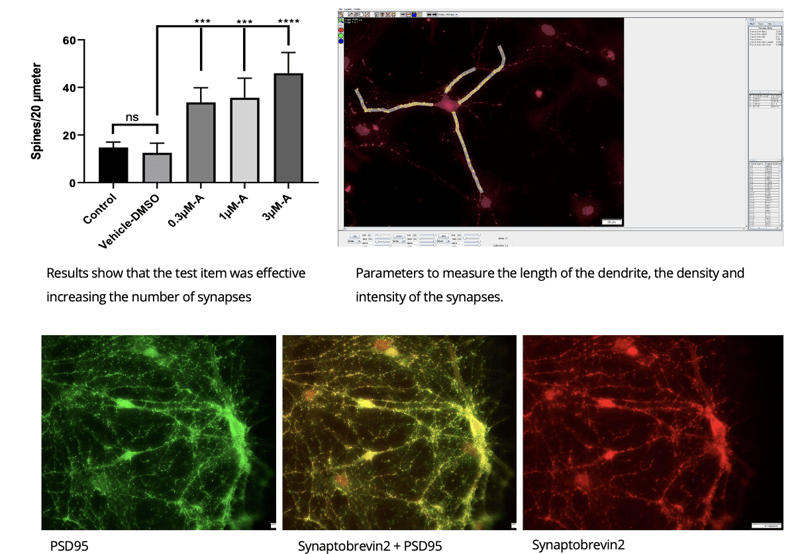A powerful method for the research of cognition, learning and degenerative disease treatment
MD Biosciences offers a synaptic imaging assay for evaluating the effect of different treatments on synapse formation and identification. This assay allows the estimation of inhibitory/excitatory synapses ratio and synaptic strength, a powerful method advancing cognition, learning and degenerative disease research and treatment options.
The assay allows researchers to understand the absolute length of neurites in early development as well as synaptic density, a later stage parameter.
Assay Overview
- Primary hippocampal neurons from mouse or rat
- Imaging using Synaptobrevin2 protein + synaptic markers
- Synaptic Count
- Synaptic Strength
- Identification of synapse type (excitatory/inhibitory)
Synaptic Imaging Markers
-
PSD95
PSD95 marker is a post-synaptic marker and represents the dendrite side of the synapse.
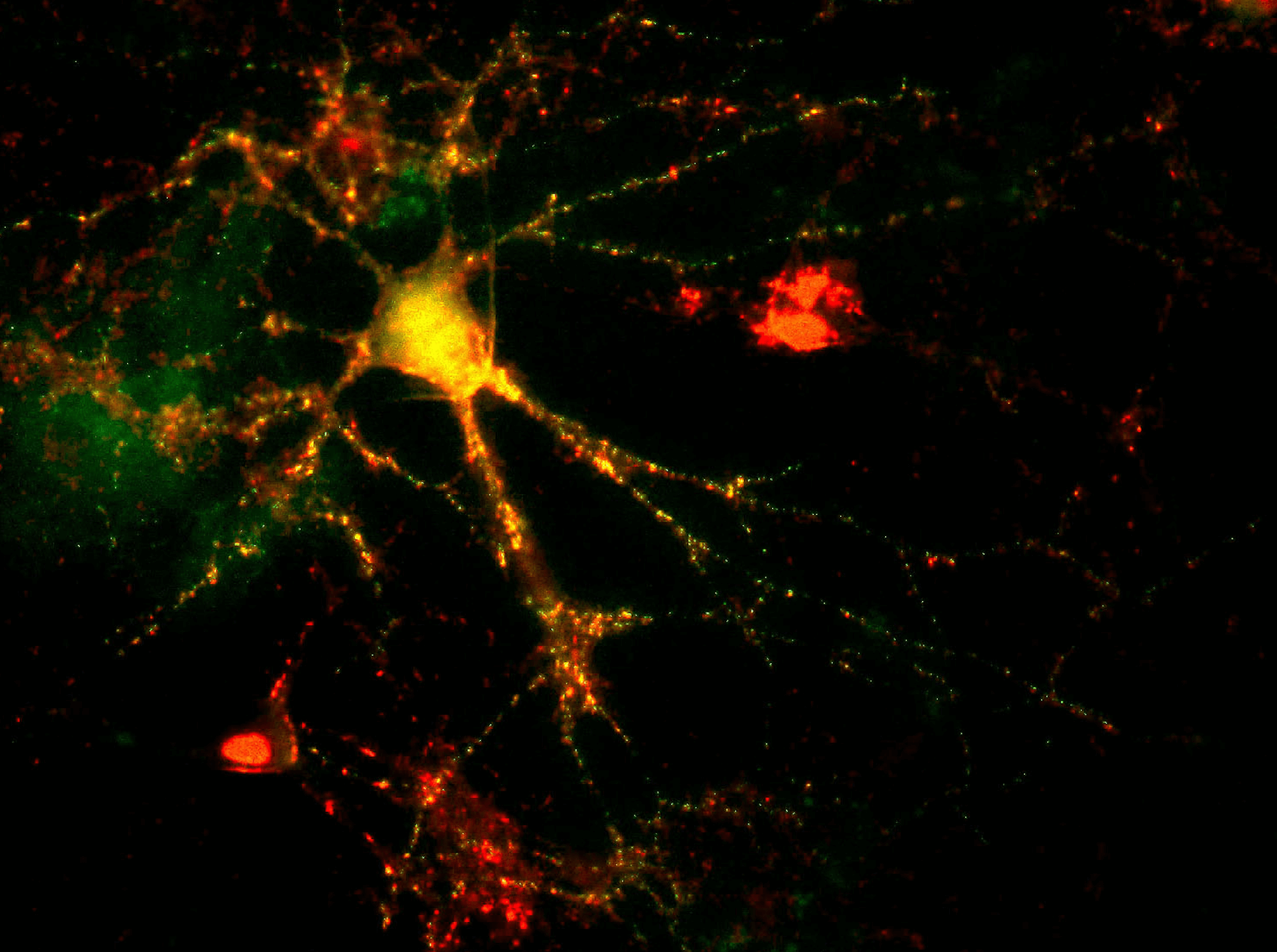
Pre & Post synaptic imaging (Synaptobrevin2 & PSD95), primary hippocampal neurons from rat.
*EGFP-PSD95 viral-vector (courtesy of Professor Noam Ziv).
-
GAD65
GAD65 is used to measure inhibitory synapses
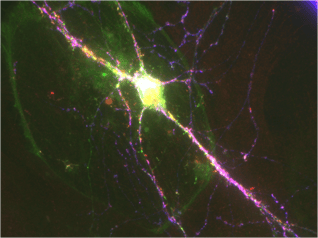
Synaptic imaging (Synaptobrevin2) with marker for inhibitory synapses (GAD65), with primary hippocampal neurons from mouse.
** in green: Synapsin lla (Shulman et al, 2016).
-
VGLUT1
VGLUT1 is a vesicle membrane protein that identifies excitatory synapses.
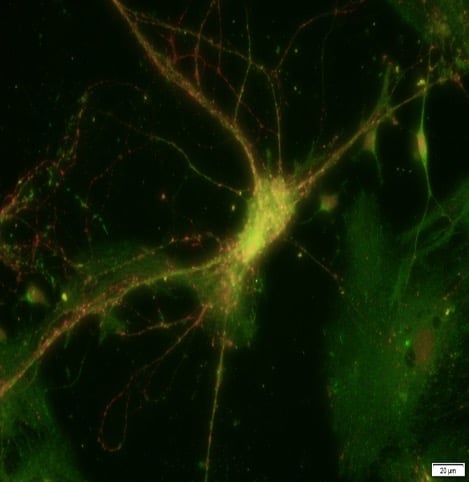
Pre & Post synaptic imaging (Synaptobrevin2 & VGLUT1), primary hippocampal neurons from rat
-
Synapsin IIa
Synapsin IIa protein is responsible for clustering vesicles together.
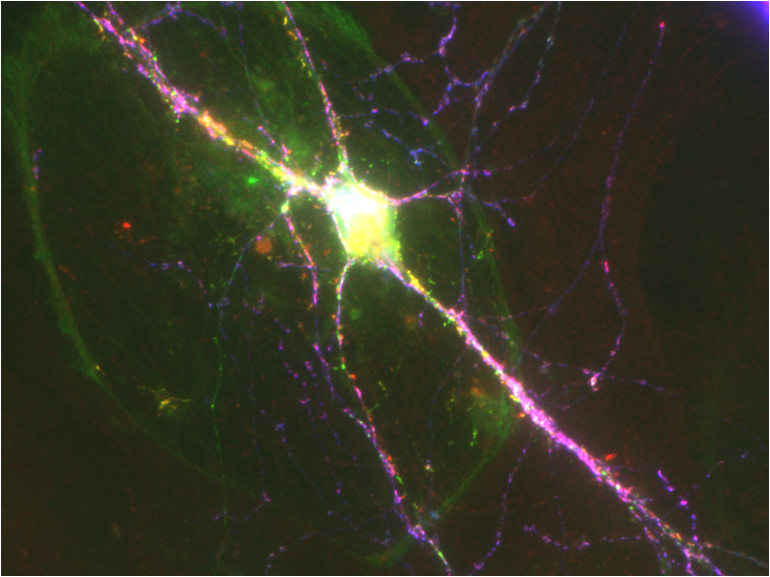
Synaptic imaging (Synaptobrevin2) with marker for inhibitory synapses (GAD65), with primary hippocampal neurons from mouse.
** in green: Synapsin lla (Shulman et al, 2016).
-
Synaptobrevin2
Synaptobrevin2 is a vesicle membrane attached protein that is a marker for synapse numbers and characteristics (size, shape, and strength).
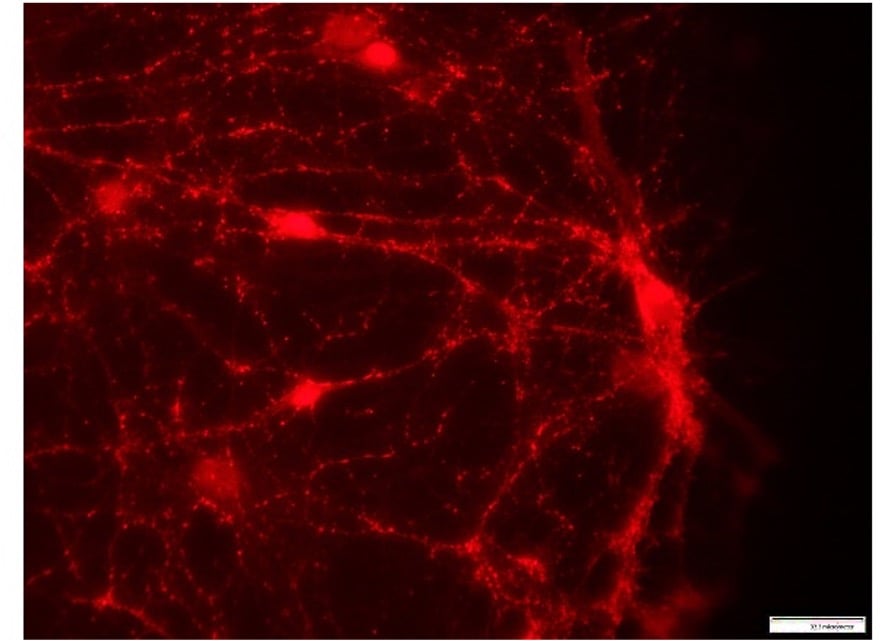
Example Data
